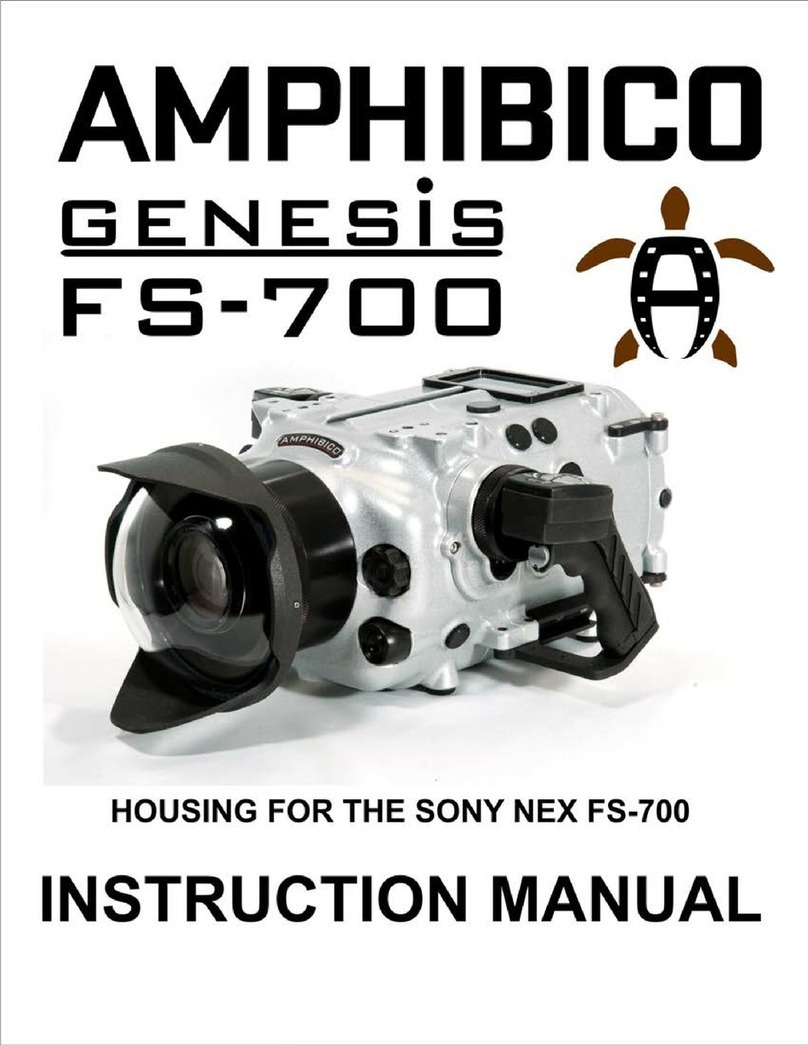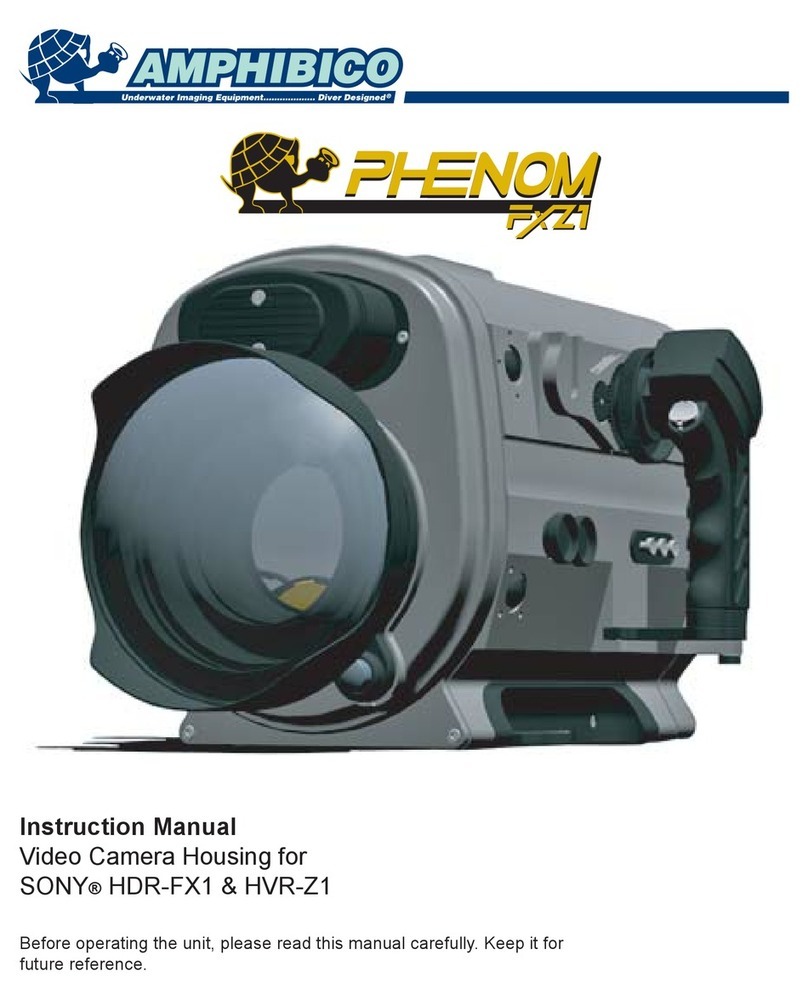2
TABLE OF CONTENTS
Unpacking Your Housing....................................................................................3
Housing Features and Controls......................................................................4-5
Preparing the Camera & Housing.................................................................6-10
Opening the housing..............................................................................6
Removing the saddle.............................................................................6
Setting the camcorder............................................................................6
Installing the saddle...............................................................................7
Connecting the saddle...........................................................................7
Placing the camcorder...........................................................................8
Closing the housing...............................................................................8
Viewfinder eyepiece adjustment............................................................9
Replacing the bayonet lens....................................................................9
Installing accessories...........................................................................10
Water Entry...........................................................................................10
Housing Camera & Operations...................................................................11-15
Power ON/OFF.....................................................................................11
CAM mode...........................................................................................11
Zooming...............................................................................................12
Focusing...............................................................................................12
White balance......................................................................................13
Light buttons.........................................................................................13
Display..................................................................................................13
Menu....................................................................................................14
Picture profile........................................................................................14
Navigation function...............................................................................14
Assign buttons......................................................................................14
Iris.........................................................................................................15
Gain......................................................................................................15
Shutter..................................................................................................15
Maintenance.......................................................................................................16
Servicing O-rings..................................................................................16
Specifications....................................................................................................17
Optional Accessories........................................................................................18
Tips & Tricks.................................................................................................18-19
Warranty.............................................................................................................20
19
TIPS & TRICKS
General Shooting Tips
1. Best results will be obtained with natural light if the sun is directly overhead during calm water periods.
2. Placing the sun behind your shoulder during shooting will produce the best colors.
3. Wide angle is the preferred focus setting for best results with subject, as close as possible to the housing. This will
reduce the water column and the amount of particles between subject and lens.
4. Zooming during shooting is not recommended unless absolutely necessary as telephoto will magnify particles.
Swimming toward subject is a much more visually pleasing filming method.
5. Use image stabilizer if available on your camera when filming macro to minimize camera movement during high
magnification. Image stabilizer is not as critical while using wide angle and will use battery power unnecessarily.
6. Buoyancy control is one of the most important aspects of underwater videography and diving in general. Avoid
disturbing bottom silt and contacting delicate reef structures. Work on controlling your breathing and your buoyancy. Your
video will be much more visually appealing. You are trying to make yourself a steady shooting platform. The less
movement you make , the better your video will be. Work on attaining a comfort zone underwater. The more comfortable
you are underwater, the more controlled your breathing will be and the steadier your video will be.
7. In low light situations, add light with optional Amphibico video lights for brighter and more vibrant colors. As light level
falls so does color saturation. Lights will also provide necessary fill during daylight shooting. If this technique is used,
filtration of light using a color correction filter will be necessary for accurate color rendition.
Audio Tips
To eliminate any faint background noises which may come from an internal device, it is recommended to switch the audio
settings of CH1 on your camcorder from auto to manual. The audio level for CH1 should be set anywhere between 3 and
4 once in manual mode.
Trouble Shooting
The PHENOM marine housing is equipped with a built in diagnostic test mode. To activate it, simply push and hold one of
the buttons on the control panel as shown bellow while turning on the unit with the right grip trigger button. Once
activated, you can test all the push buttons and wheels to see if the function properly. Pushing a button or turning a wheel
will light up a different indicator light making it either red or green. Push and hold one of the buttons on the control panel
as shown bellow to exit diagnostic test mode.
Control Panel
Test mode at power up
Hold for test mode exit
Power ON
Right grip trigger button




































